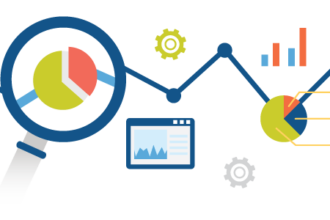 It’s becoming increasingly difficult for businesses to make accurate forecasts about what might happen six months from now. We’re living in a world that is in constant flux and providing accurate projections so that we can adequately plan our sales strategy, assess competitor threats and anticipate changes in consumer behavior is a perpetual challenge.
It’s becoming increasingly difficult for businesses to make accurate forecasts about what might happen six months from now. We’re living in a world that is in constant flux and providing accurate projections so that we can adequately plan our sales strategy, assess competitor threats and anticipate changes in consumer behavior is a perpetual challenge.
 It’s becoming increasingly difficult for businesses to make accurate forecasts about what might happen six months from now. We’re living in a world that is in constant flux and providing accurate projections so that we can adequately plan our sales strategy, assess competitor threats and anticipate changes in consumer behavior is a perpetual challenge.
It’s becoming increasingly difficult for businesses to make accurate forecasts about what might happen six months from now. We’re living in a world that is in constant flux and providing accurate projections so that we can adequately plan our sales strategy, assess competitor threats and anticipate changes in consumer behavior is a perpetual challenge.
Navigating today’s turbulent business landscape requires the ability to adapt quickly to changing market opportunities and complex sales cycles. The pervasive use of social media tools like Twitter and Facebook has changed the dynamics of the buyer/seller relationship and heralded a revolution in consumer behavior. Our online interactions are fuelling the explosion in the knowledge economy and these social exchanges play an increasingly influential role in brand affinity and purchasing decisions. The lack of control in the sales cycle is a by-product of this changing business landscape. The linear sales process is no longer suited to attracting and retaining loyal customers in today’s competitive sales environment.
According to Robert Safian, editor of Fast Company, “The business climate, it turns out, is a lot like the weather. And we’ve entered a next-two-hours era. The pace of change in our economy and our culture is accelerating–fueled by global adoption of social, mobile, and other new technologies–and our visibility about the future is declining.” He points to the constantly shifting sands of the global mobile phone market as evidence of this tireless creation and destruction cycle. “Just five years ago, three companies controlled 64% of the smartphone market: Nokia, Research in Motion, and Motorola. Today, two different companies are at the top of the industry: Samsung and Apple. This sudden complete swap in the pecking order of a global multibillion-dollar industry is unprecedented.”
It should come as no surprise that sales professionals are struggling to keep up with the frenetic pace of change. In a 2010 survey conducted by OgilvyOne among 1000 sales professionals in the US, UK, Brazil and China, 68% believed that the selling process is changing faster than their own organizations are adapting to it. There is a growing knowledge gap that needs to be bridged to ensure that sales professionals have all the information they need at their fingertips in order to respond appropriately to customer needs and demands. Companies need to better equip their salespeople with the necessary tools and training to meet this new reality or face diminishing sales and loss of revenue.
The ability to automatically monitor and extract information flowing from an unlimited number of web sources such as news sites, discussion forums, social networks and even the ability to analyze the minutes and agendas from council meetings or examine newly uploaded pdf files on your competitors websites – these are just some of the exciting developments that companies are starting to leverage. For example a Sales manager from Philips in charge of selling global lighting systems to equip buildings would be interested in monitoring public tender websites to identify new sales opportunities.
The future of selling is one which relies on targeted sales intelligence, similar to the way Amazon recommends books to you based on your purchase patterns. Once companies learn to harness this information correctly, the insight it will provide to frontline sales teams will reap huge rewards. Wal-Mart, the world’s largest retailer, is logging one million customer transactions per hour and feeding information into databases estimated at 2.5 petabytes in size. In order to predict or at least anticipate changes in customer sentiment, it’s imperative that sales professionals have access to the latest market data at the click of a mouse. The idea is not to overburden sales professionals with massive amounts of information but to package important data into valuable and intuitive insights to speed up sales cycles and ensure better outcomes. The secret to winning more customers begins with empowering your sales executives with all the information they need to close that lucrative sale.
Benefits of using intelligence to improve the sales process:
- Receive detailed competitor product descriptions
- Benchmark sales performance against competitors
- Enable narrow segmentation of consumers to provide more tailored solutions
- Measure online reputation and analyze consumer sentiment
- Achieve faster sales cycles and better results
- Target resources more efficiently
- Profile potential customers and identify upselling opportunities
- Assess opportunities and threats in new and existing markets
This article was originally posted on Digimind’s web intelligence blog.







